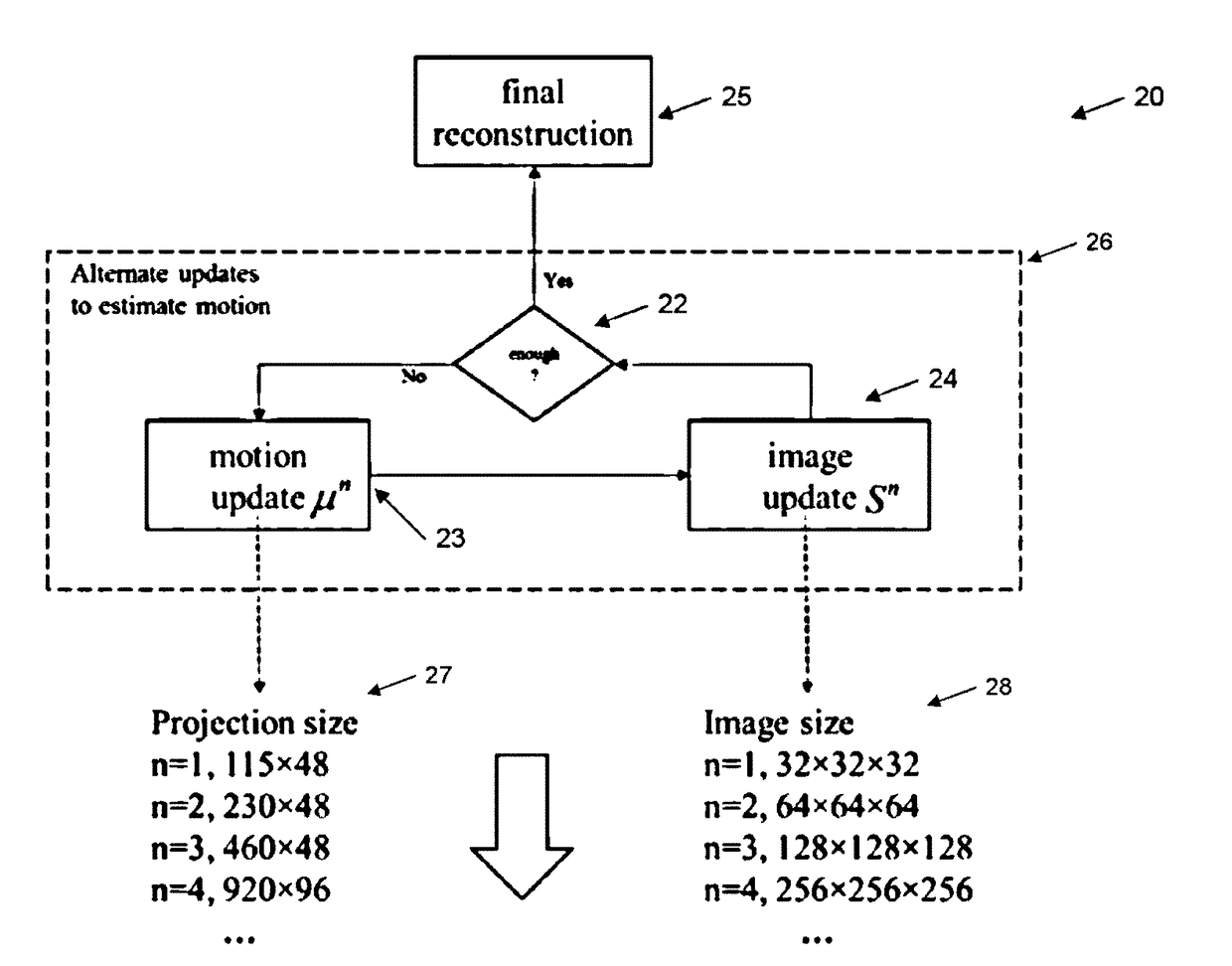Method And Apparatus For Motion Correction In CT Imaging
a motion correction and ct imaging technology, applied in the field of systems and methods, can solve problems such as distortion and blurring when images are reconstructed, false diagnosis, and images that are not interpretabl
- Summary
- Abstract
- Description
- Claims
- Application Information
AI Technical Summary
Benefits of technology
Problems solved by technology
Method used
Image
Examples
Embodiment Construction
[0021]The preferred embodiments provide a data-driven method to iteratively correct for motion errors together with the reconstruction of helical CT imagery. In every iteration, an estimate of the motion is undertaken, view-by-view, which then can be used to update a system matrix which is used during reconstruction. A multi-resolution scheme was used to speed up the convergence of the joint estimation of the motion and reconstruction. The quality of the reconstructed images can be improved substantially after the correction.
[0022]The approach was found to reduce or eliminate the motion artifacts in helical-CT reconstruction. The correction method was found to only need the measured raw helical scan data, hence it is called a ‘data-driven’ approach.
[0023]The Method
[0024]Coordinate Systems:
[0025]Turning initially to FIG. 1, there is shown the operational aspects 10 of a helical CT scan and associated coordinate systems. A clinical helical CT system usually has a curved detector 12. I...
PUM
 Login to View More
Login to View More Abstract
Description
Claims
Application Information
 Login to View More
Login to View More - R&D
- Intellectual Property
- Life Sciences
- Materials
- Tech Scout
- Unparalleled Data Quality
- Higher Quality Content
- 60% Fewer Hallucinations
Browse by: Latest US Patents, China's latest patents, Technical Efficacy Thesaurus, Application Domain, Technology Topic, Popular Technical Reports.
© 2025 PatSnap. All rights reserved.Legal|Privacy policy|Modern Slavery Act Transparency Statement|Sitemap|About US| Contact US: help@patsnap.com



